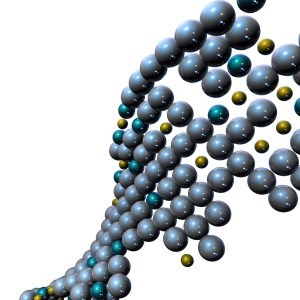May 4 2010
NPL has recently been helping the Health Protection Agency (HPA) set up the National Nanotoxicology Research Centre (NNRC) at their Centre for Radiation, Chemical and Environmental Hazards with the aim of advancing research into the possible toxic effects of nanoparticles.
Nanoparticles, small chunks of matter less than 100 billionths of a metre across, have specific physicochemical properties that can be very useful in a variety of applications such as medicine, electronics, optical-electronic systems and imaging, as well as cosmetics and food products. However, the toxicology of nanoparticles is poorly understood and believed to be different to that of larger particles.
 Nanoparticles, small chunks of matter less than 100 billionths of a metre across, have specific physicochemical properties that can be very useful in a variety of applications.
Nanoparticles, small chunks of matter less than 100 billionths of a metre across, have specific physicochemical properties that can be very useful in a variety of applications.
Dr Richard Gilham, an NPL expert in nanoparticles, was seconded to the HPA to advise them how to best realise their need for a world-class aerosol nanotoxicology laboratory. This covered many aspects, all the way from the types of measurement instrumentation and physical design of the experiment, to expert advice on setting up a quality system and calibration programme to ensure the most reliable results possible.
NPL is one of the few institutions in the world with the necessary expertise to assist the HPA in this way. Dr Gilham was delighted to be involved in such an important project:
- "It's been a privilege and a pleasure to work with the HPA. As well as learning a lot about the unique challenges presented by their experiment, I felt that my previous experience in other branches of airborne nanoparticle measurement was put to excellent use."
The HPA is collaborating with a number of other institutions besides NPL, to develop the NNRC and its research programme, including universities and the Medical Research Council.
The NNRC will play a pivotal role in understanding the interaction of nanoparticles with the body. Its initial focus will be on examining how nanomaterials behave once they have entered the body via the lungs and skin. The centre will then expand its research into studying the other routes nanomaterials take into the body, and how they are transported around and ultimately removed from the body.